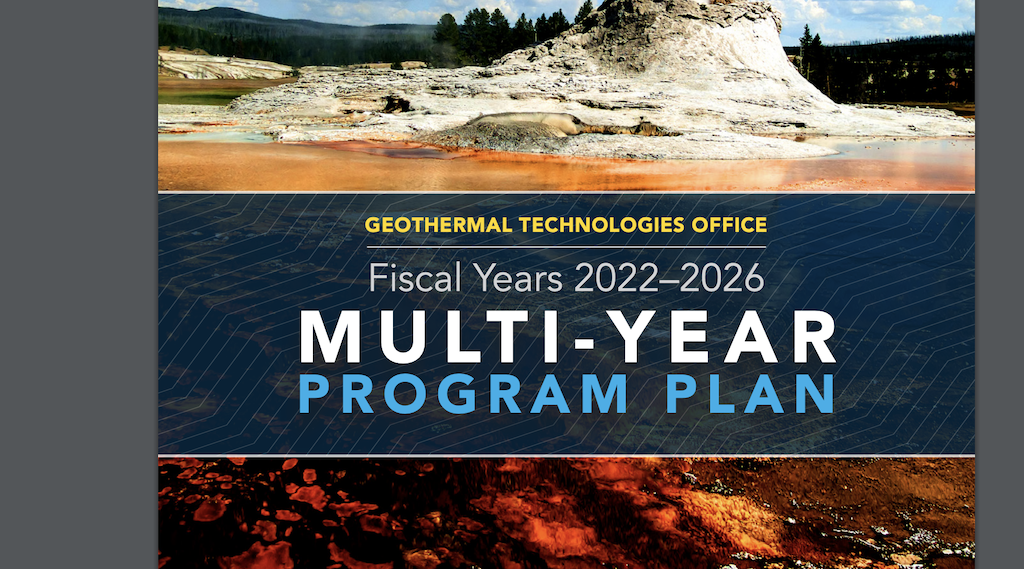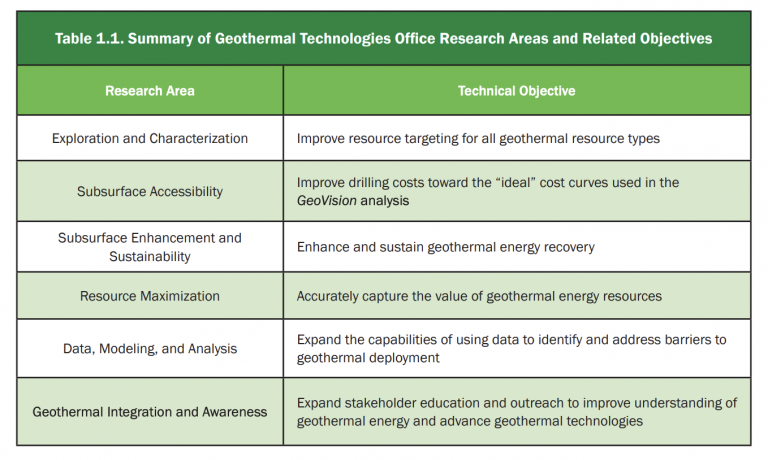
GTO Multi-year Program Plan 2022-2026 (document title - screenshot)
The U.S. Department of Energy’s Geothermal Technologies Office has released its Multi-Year Program Plan (MYPP) this week.
The plan lays out GTO’s vision and mission and presents a high-level technology plan to accelerate the advancement of geothermal technology for the next five years. Access the document here (pdf).
The Geothermal Technologies Office has defined the following three strategic goals:
Strategic Goal 1: Drive toward a carbon-free electricity grid by supplying 60 GW of EGS and hydrothermal resource deployment by 2050.
Strategic Goal 2: Decarbonize building heating and cooling loads by capturing the economic potential for 17,500 geothermal district heating (GDH) installations and by installing geothermal heat pumps (GHPs) in 28 million households nationwide by 2050.
Strategic Goal 3: Deliver economic, environmental, and social justice advancements through increased geothermal technology deployment.
As described in the plan document, the GTO plans to meet these three Strategic Goals through research, development, demonstration, and deployment in six Research Areas. This Multi-Year Program Plan (MYPP) lays out these research areas and the associated technical objectives, which include five technical areas and one less technical technology agnostic area (Geothermal Integration and Awareness). Progress in each area is critical to meeting the promise of geothermal energy in both the electric and heating and cooling sectors.
The Research area objectives defined to achieve the goals:
• Exploration and characterization
• Subsurface accessibility
• Subsurface enhancement and sustainability
• Resource Maximization
• Data, modeling and analysis
• Geothermal integration and awareness

The multi-year program plan includes 18 concrete performance goals to measure progress and adjust research plans along the pathway. In the program, these goals are providing details for the different research targets looking at Enhanced Geothermal systems, Hydrothermal Resources, Low-temperature and Coproduced resources, as well as data, modeling and analysis.